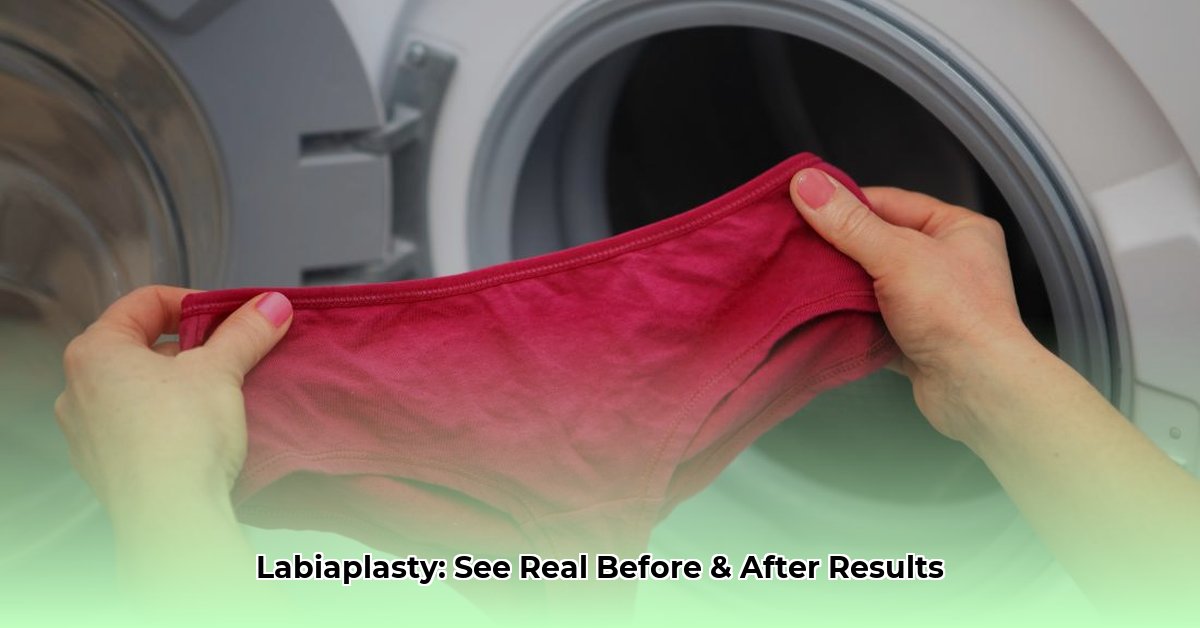Understanding Labial Hypertrophy
Worried about the appearance of your labia? You’re not alone. This comprehensive guide provides clear, compassionate, and medically accurate information about labial hypertrophy, empowering you to make informed decisions about your body. We’ll explore what labial hypertrophy is, its causes, potential symptoms, and various treatment options, including surgical and non-surgical approaches.
What is Labial Hypertrophy?
Labial hypertrophy refers to enlarged labia minora (inner lips) or labia majora (outer lips). Just as height and other physical traits vary, labial size and shape differ significantly among women. What’s considered “normal” encompasses a broad spectrum.
Causes of Labial Hypertrophy
Several factors can contribute to labial hypertrophy:
-
Genetics: Like many physical traits, labial size is often inherited. Your genetic predisposition plays a significant role in determining the size and shape of your labia from birth. Ongoing research may further clarify the specific genes involved.
-
Hormonal Changes: Hormonal fluctuations during puberty, pregnancy, and menopause can influence labial size. Puberty often leads to increased labial size due to estrogen surges. Pregnancy can also cause changes, and some changes may be temporary while others persist postpartum. Menopause can also contribute to changes in labial appearance.
-
Childbirth: The stretching and pressure associated with childbirth can sometimes lead to enlargement or changes in labial shape.
-
Other Factors: While less common, other factors such as certain medical conditions, infections (like yeast infections or bacterial vaginosis), allergic reactions, or irritations from clothing or hygiene products may also contribute to changes in labial appearance. It’s always wise to consult a doctor if you notice sudden or significant changes. Some STIs can also cause swelling in the genital area. A Bartholin’s cyst, a fluid-filled sac near the vaginal opening, can cause noticeable swelling on one side.
Symptoms and Concerns
While some women with labial hypertrophy experience no discomfort, others may have:
- Physical Discomfort: Chafing, irritation, pain during intercourse, or discomfort during activities like cycling or wearing tight clothing.
- Emotional Concerns: Self-consciousness, embarrassment, anxiety about intimacy, and negative body image.
Visual Guide to Labial Hypertrophy
(Content warning: The following section contains images of female genitalia. Please proceed only if you’re comfortable viewing such content. Age verification may be required.)
(A gallery of diverse, high-quality images depicting various degrees of labial hypertrophy would be placed here. Images should be clearly labeled (e.g., “mild hypertrophy,” “post-childbirth hypertrophy”) and tagged for accessibility.)
Treatment Options
Several options are available for managing labial hypertrophy:
Surgical Options (Labiaplasty)
Labiaplasty is a surgical procedure to reshape the labia. Different techniques exist, including:
- Trim Technique: Excess labial tissue is removed, often reducing overall size.
- Wedge Technique: A wedge-shaped piece of tissue is removed, preserving the natural edge of the labia while reducing size. Other techniques like the Z-plasty or de-epithelialization may be employed to minimize scarring and optimize aesthetic outcomes.
(This section would include before-and-after photos of various labiaplasty techniques, with content warnings and clear descriptions.)
Choosing a qualified, board-certified plastic surgeon or gynecologist specializing in labiaplasty is crucial.
Non-Surgical Options
Non-surgical approaches may help manage discomfort:
- Clothing Choices: Wearing breathable cotton underwear and avoiding tight-fitting clothing.
- Hygiene Practices: Gentle cleansing with mild, unscented soaps.
- Topical Creams: Over-the-counter creams or ointments may help soothe irritation (consult a doctor for recommendations).
Finding a Qualified Surgeon
If considering labiaplasty, research and select a board-certified plastic surgeon with specialized expertise in this procedure. Look for surgeons certified by the American Board of Plastic Surgery or the American Board of Obstetrics and Gynecology with a subspecialty in Female Pelvic Medicine and Reconstructive Surgery.
Recovery and Post-Operative Care
Labiaplasty is typically an outpatient procedure. Expect swelling, bruising, and discomfort managed with pain medication. Following post-operative instructions carefully is vital for a smooth recovery.
Emotional and Psychological Support
Labial hypertrophy can impact emotional well-being. Resources for support and counseling are available. Body positivity and self-acceptance are essential, regardless of treatment choices.
Frequently Asked Questions (FAQ)
- Is labiaplasty painful? Discomfort is common but manageable with pain medication.
- What are the risks of labiaplasty? Risks include infection, bleeding, scarring, and changes in sensation. Discuss these with your surgeon.
- How long is the recovery? Recovery typically takes a few weeks, but full healing might take longer.
- What is the cost of labiaplasty? Costs vary depending on the surgeon, technique, and location.
Disclaimer
This information is for educational purposes only and does not constitute medical advice. Consult a healthcare professional for diagnosis and treatment.
- Bento Box Trays Streamline Restaurant Meal Presentation and Transport - December 13, 2025
- Plastic Bento Boxes Face Scrutiny Over Sustainability Impacts - December 11, 2025
- Bento Tray Revolutionizes Organized Meal Transport and Presentation - December 10, 2025










